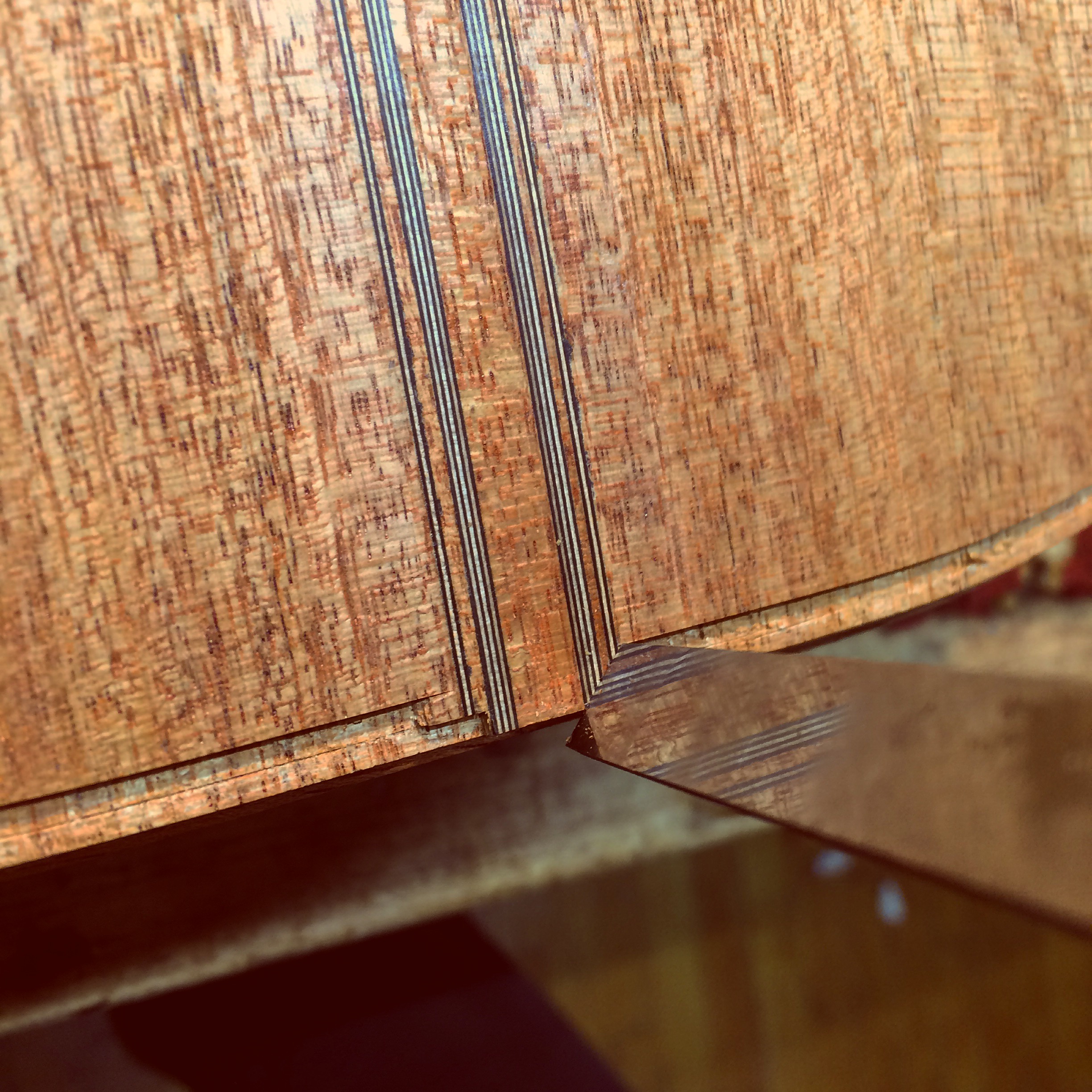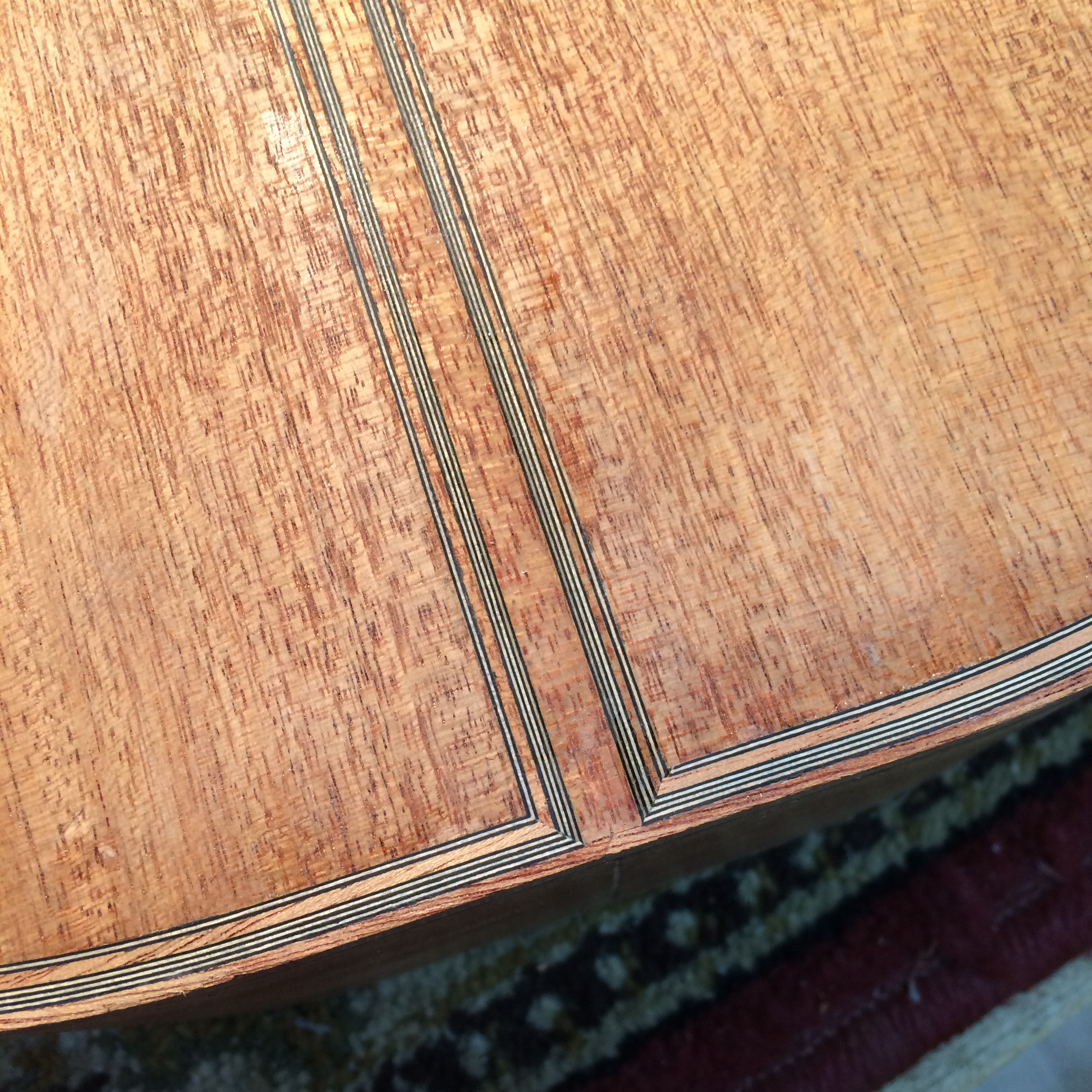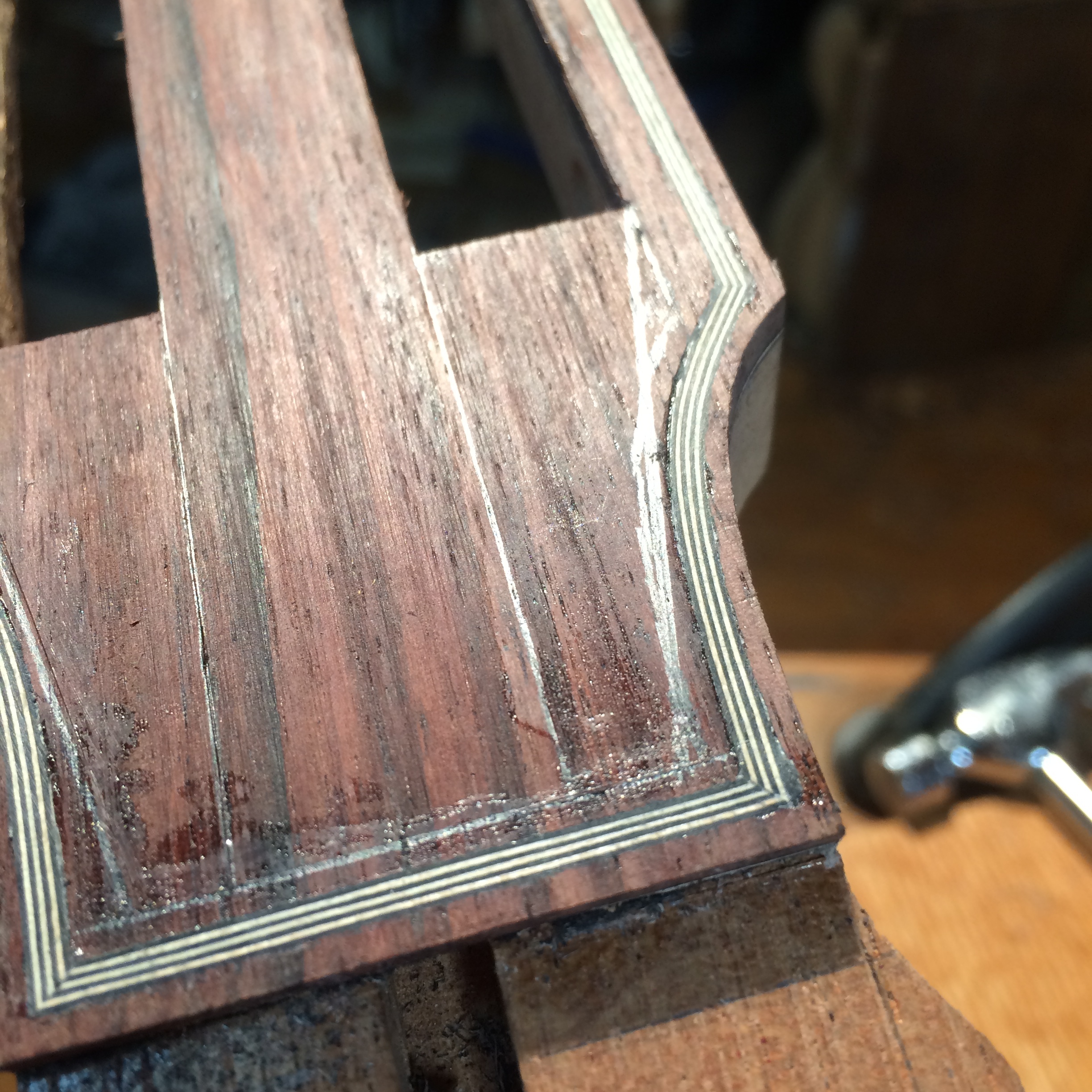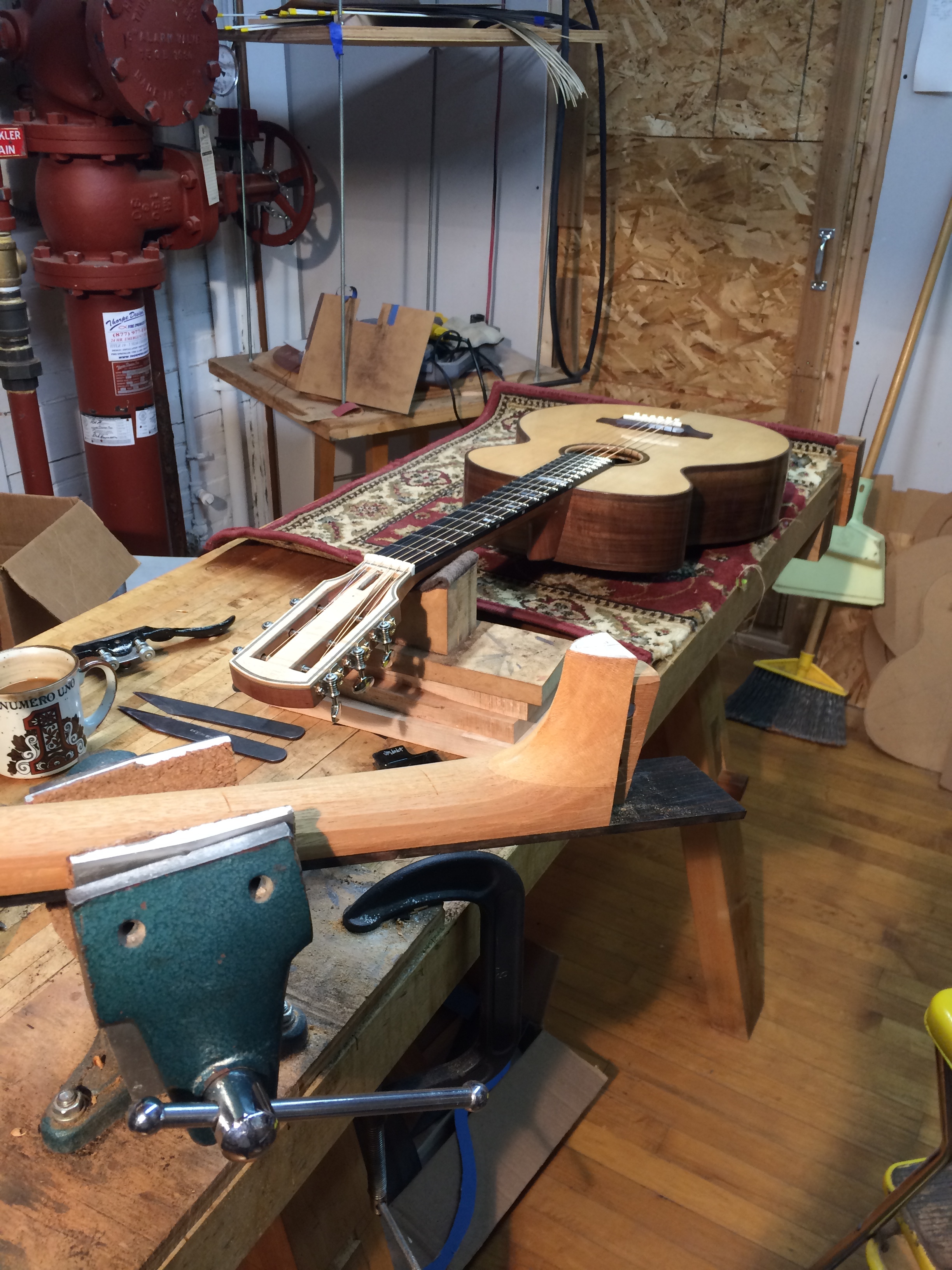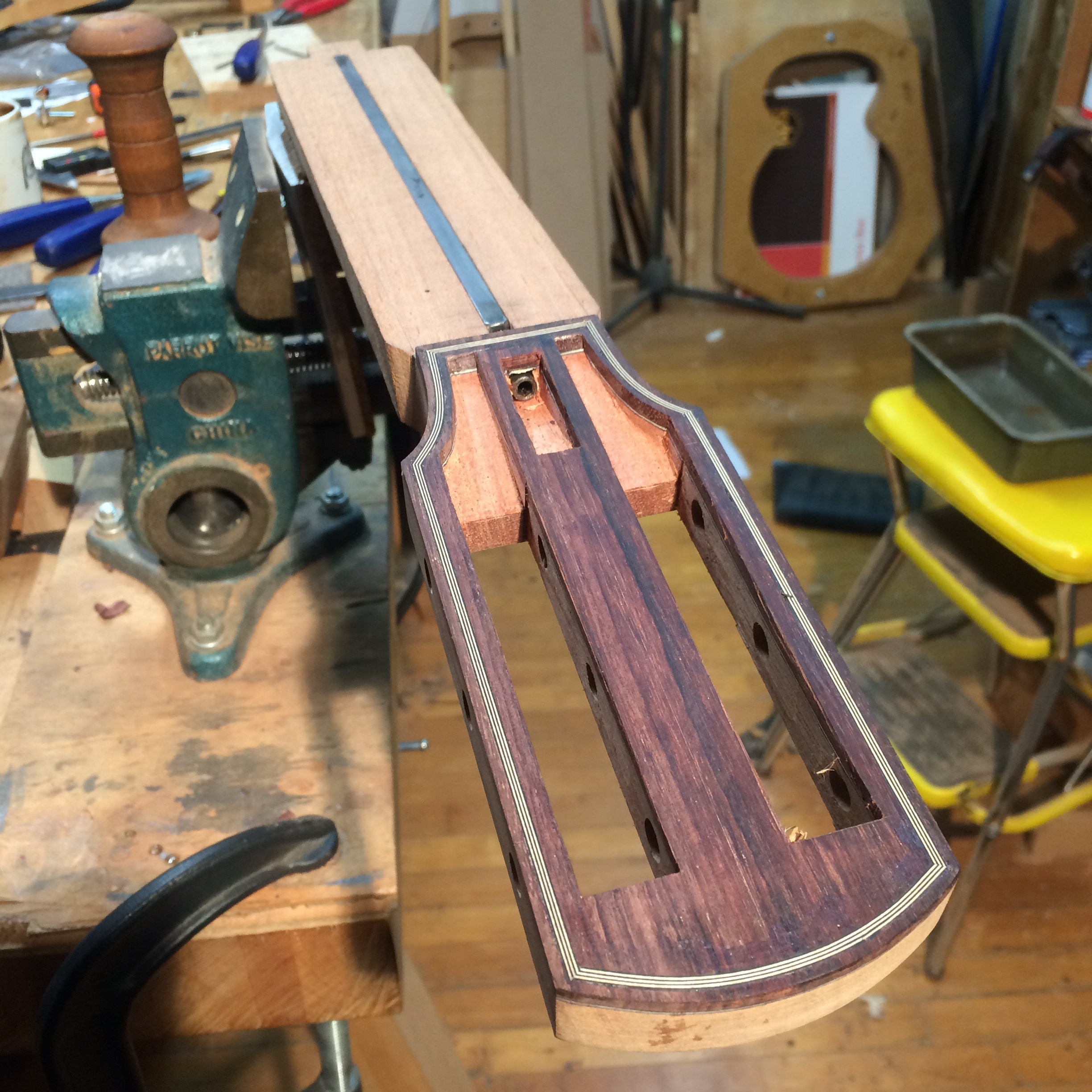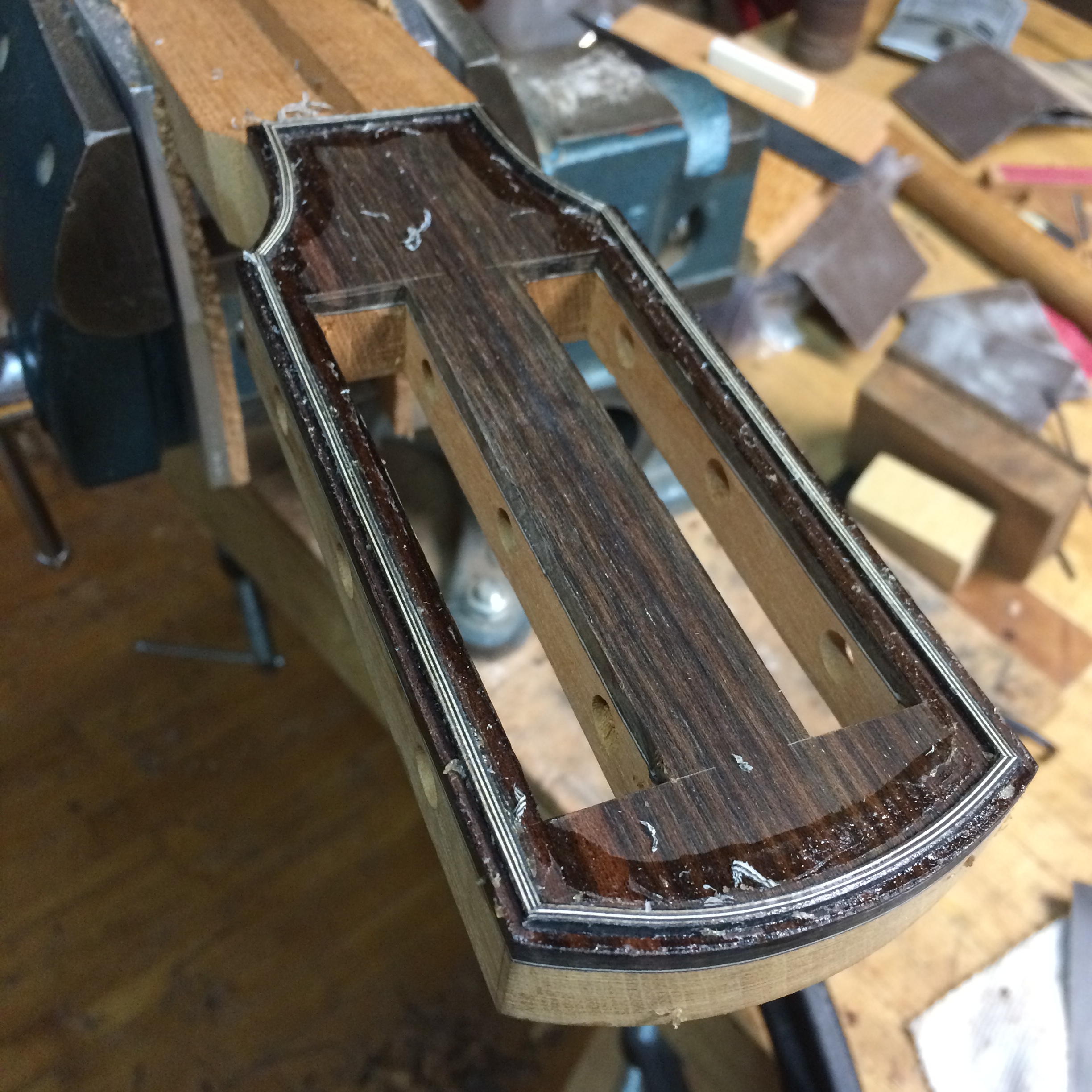January Shop Update
Happy New Year! I am always excited about things happening in the shop, but especially so right now. As 2019 begins I am gearing up for guitar shows starting this coming weekend in San Rafael at the California World Guitar Show. I have no idea what to expect, as it definitely seems geared towards vintage guitars, but I think it’ll be a fun few days of being surrounded by guitars and people who love them. Following that I will be at the Central Coast Guitar Show in San Luis Obispo on Saturday, March 30th, hopefully with four as yet unveiled guitars. The biggest of these big and exciting events however is the impending first international appearance of Queen City Guitars this summer for…
The Vancouver International Guitar Festival!
The show runs June 29th and 30th this year and I am completely blown away to be a part of it. It is time to brush up on international law regarding wood and shell importation and start making some instruments for this show. I’ve been mulling over a few ideas for guitars I’d like to make to bring to Canada and I will definitely be posting about them here and on Instagram as I get them underway. It’s the perfect excuse to try a few new interesting and unconventional things I have been thinking about and I will probably be designing an rb-00 to fill out that model size progression, possibly for my next build. I am stoked for the challenge to build some extra special guitars (I am also fully embracing California vernacular). I have been talking about discussing the art of lutherie in these updates for a while and I thought I might actually do that today. If that is your sort of thing, I hope you enjoy, but if not you might skip down to the next block of bold text before the photo gallery…
As a steel string builder my goal is to create guitars with a voice
that stays strong from the high trebles, where many steel strings naturally excel, all the way through to the lowest bass register. I want the tone to be full and clear and I want the top to be responsive to the players input. Top construction is just a part of achieving this, but an important one, and one that occupies a lot of my thoughts in each build.
The top starts as two book matched sheets, or plates, generally of spruce, though I have made a few mahogany topped instruments, blued together. I thin each top by hand with planes and scrapers to a uniform thickness and then it is oriented on the sides of the guitar, and the sound hole is marked out so I can tell where the braces will run and where the lining along the sides will meet the top. At this point is when the work of voicing the top really begins. First by adjusting the thickness of the top along the perimeter of the lower bout. I keep careful track of this, marking thicknesses down in .05 mm increments(any less seems to get lost in the noise of the calipers and likely the softness of the wood), and record it for use later in the build and for reference on subsequent builds.
You might notice the braces of an X-braced guitar tend toward a heavily braced center with bracing which becomes thinner as it approaches the sides. Thinning the perimeter accentuates this and while it is not readily visible on a guitar it is an important aspect of how I build tops.
Size 0 top bracing, stray pencil marks are an artistic testament to the act of creation, right…?
The most striking element of my bracing and voicing however is the bridge patch. A traditional X-braced steel string has a long hardwood bridge patch that stretches from the one leg of the X to the other. It provides support to the top under the bridge, where the strings exert a tremendous rotational force, and a more wear resistant place for the ends of the strings to be held by the bridge pins. One of the challenges of the rounded lower bout guitars I have been building lately is the position of the bridge in relation to this patch and the X brace. On most guitars the bridge crosses over the legs of the X-brace, but on the first rb-0 prototype the footprint of the bridge barely touched the X. With all of that open spruce I knew I needed a solution to keep the top from bellying and an oversized cross grain bridge patch seemed like the wrong approach; too heavy and too much added stiffness across the top. The first iteration of this delta bridge patch with grain parallel to the top grain was actually all hardwood, but thinner than a traditional bridge patch to compensate for added weight and it worked pretty well.
As I thought more about it, and top bracing in general through that build and after, as I got to enjoy the sounds of that guitar, I felt more and more that the larger spruce patch made a lot of sense. It is really what brought me to where I am now in terms of how I brace tops. The spruce of the patch provides stiffness in the same way as the top, stiffest in the direction of the grain, the direction of the strings, just like the top, not limiting the flexibility as much as a traditional cross grain bridge patch. When a bridge bellies badly, it not only pulls up the top behind the bridge into a dome, it also rotates the bridge, pressing the top in front of the bridge down, which the parallel grain spruce is more capable of resisting. You’ll notice I also incorporate a smaller hardwood cross patch, inlaid into the spruce. This varies in size from instrument to instrument, but it is much smaller and a little thinner than a traditional cross grain bridge patch, to reduce weight and stiffening across the grain. It is positioned below the bridge pins because it is primarily a wear resistant place for the strings to anchor into, but it also helps the bridge resist the curvature the strings try and pull into the top behind the bridge.
I wouldn’t, of course, be as into this idea if I didn’t also think it had a positive effect on the guitars sound. As I thought about it it made a lot of sense in relation to how the rest of the bracing in an X-braced guitar is laid out. The other thing that bellying tells us about a guitar top is that the area around the bridge is prone to a localized weakness. The area under the bridge is moving independently of the rest of the guitar top, but as a builder I want all of the energy being put into the bridge from the strings to drive the whole guitar top. I think that the spruce delta does this while impeding the movement of the top as a hole less than a heavier cross grain hardwood patch.
The guitar top vibrates in a variety of patterns, or modes and the first of these is the whole top acting as a cohesive unit, this is the lowest frequency mode. The variable top thickness, the bridge patch and the bracing structure as a whole serve to establish the strength of this mode, and the placement and carving of each brace establishes and supports the modes of ascending frequency. I have spent a lot of time thinking about the lowest modes because a full and clear bass is something I often find missing from factory steel strings and I want to be sure it doesn’t get lost in the guitars I am building.


